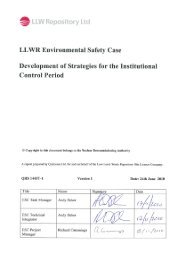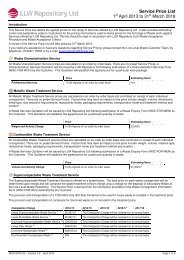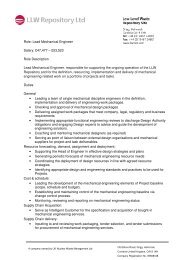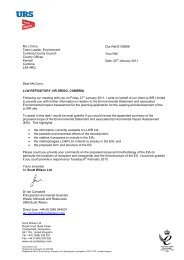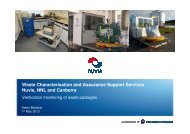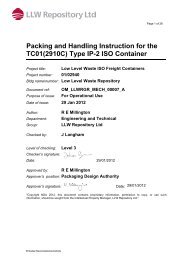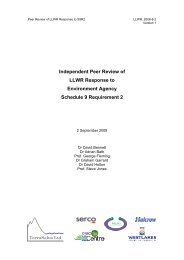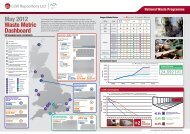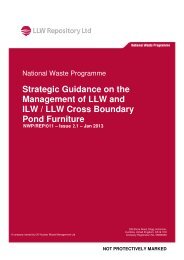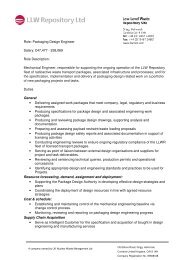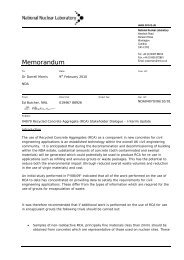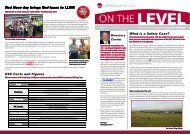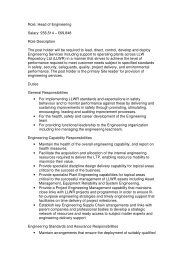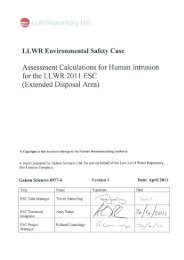Halcrow, Coastal Studies Forward Programme Data Compilation ...
Halcrow, Coastal Studies Forward Programme Data Compilation ...
Halcrow, Coastal Studies Forward Programme Data Compilation ...
You also want an ePaper? Increase the reach of your titles
YUMPU automatically turns print PDFs into web optimized ePapers that Google loves.
(c) COSMOSCOSMOS-2D is a two-dimensional model (for both vertical and cross-shoredimensions) of nearshore hydrodynamics, sediment transport and seabed evolution(known collectively as morphodynamics). Extensive research and developmentwork has been undertaken through collaboration between <strong>Halcrow</strong> and HRWallingford and at each stage of development extensive model tests have beenperformed against available laboratory and field data (HR Wallingford 1989, 1994).The two-dimensional nearshore model assumes a straight coastline with paralleldepth contours. It includes the following physical processes:wave transformation by refraction (by depth variations and currents),shoaling, Doppler shifting, bottom friction and wave breakinginteracted longshore tidal and wave-induced currentscross-shore undertow velocitiescross-shore and longshore sediment transport rates and down-cutting ofthe cohesive profile (where present)depth profile changes due to cross-shore and longshore transport,including dune avalanching where appropriate.The model assumes a straight coastline with parallel depth contours and gridpoints are chosen along a cross-shore line at spatial intervals. The model alsoallows inclusion of a cohesive layer beneath a sand beach. The model can be runfor a single wave and tidal condition or for a long sequence of wave/tidalconditions at specified time increments; for this study it has been run for threesingle wave conditions. The model determines wave, current and sedimenttransport parameters at each grid point.Although the model has many parameters, these are generally been set topreviously established values based on calibrated and validated laboratory and fielddata. As with the alongshore transport model the lack of suitable site-specific datameans it is not possible to calibrate the model specifically to the site. Consequently,outputs are used to help develop an understanding of the mechanisms at work andthe change processes that operate at the site.(d) Kamphuis EquationThe Kamphuis (1991, 2000) equation is a bulk sediment transport method, similarto the <strong>Coastal</strong> Engineering Research Center formula (CERC 1984), which relatesDoc No 1 Rev 2: Date: May 2010 12



